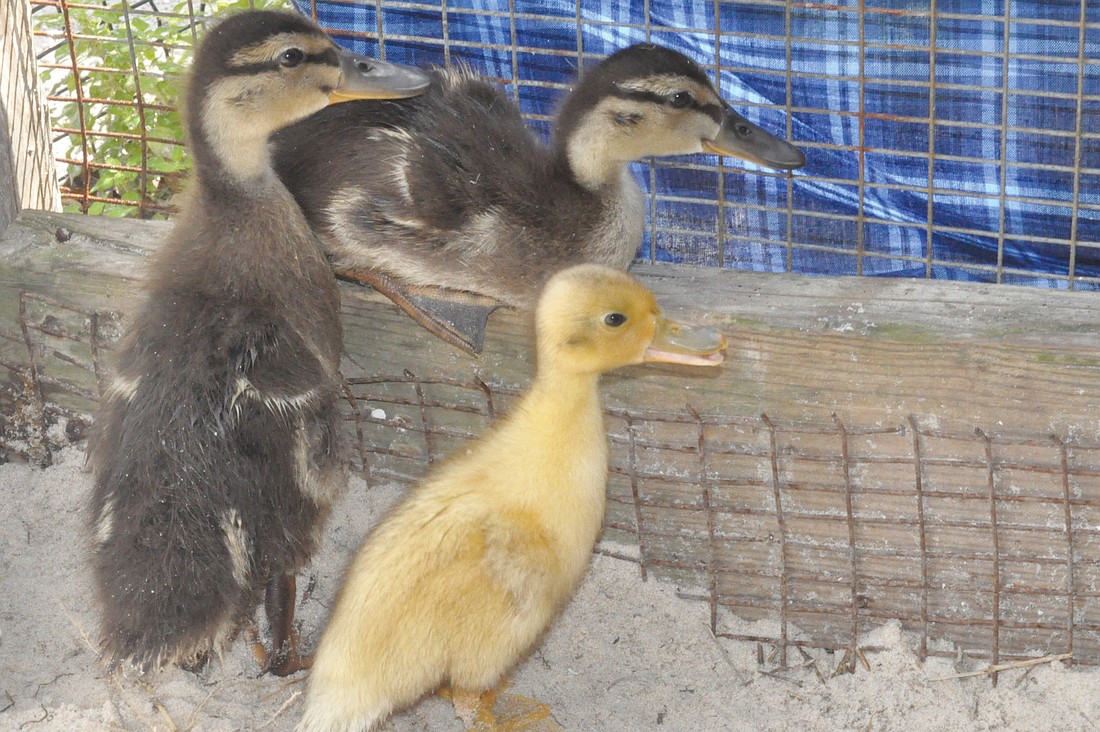- April 19, 2024
-
-
Loading

Loading

For Helene Adams, late March kicks off the most wonderful time of the year — or at least the most adorable.
It’s baby-bird season, so Adams, who volunteers every Tuesday and Thursday at Save Our Seabirds, gets roughly four months of quality time with ducklings, owlets, cygnets, woodpecker chicks and eyas (baby hawks). Her duties: feeding the babies, keeping them warm and monitoring their development and behavior. Her joys? Too numerous to count.
“They’re voracious little eaters,” Adams says while offering woodpecker chicks mealworms with a pair of forceps. When they first arrive, baby birds require sustenance every 20 minutes. After a few days, the interval between feedings stretches to 45 minutes, with many birds learning to eat on their own within a week or two.
“They grow up remarkably fast,” Adams says. “They come in looking pretty embryonic, but, within a week, they have their feathers and start becoming self-sufficient.”
Once babies have mastered self-feeding, they are isolated for 14 days while volunteers inspect them to ensure they don’t have any viruses. Then they move to a large aviary with other birds for flight training.
“That’s it,” Adams said. “Once they can fly and feed themselves, we release them into the wild.”
To prepare birds to leave the SOS nest, volunteers avoid excessive handling and talking.
People tend to see baby birds after spring storms, which, with high winds, can knock nests out of trees. If you spot baby birds on the ground, look for the parents, because not all fledglings are abandoned, says SOS Director Lee Fox.
“They (the parents) know their babies need to eat, so they should come by within 15 to 20 minutes, though they only stop by about 30 seconds at a time,” she says.
If you see no signs of a parent within an hour, call SOS immediately, because the baby birds need food. Don’t attempt to feed them yourselves, Fox said.
“When they’re bare naked, the average person can’t identify the type of bird and they all have specific diets,” she says. “If you give a worm to a seedeater, it will die. You could end up doing more harm than good.”
Nestlings belong in the nest
If you can’t find the original nest or it has been destroyed or is impossible to reach, you can make a substitute using a plastic berry basket, a flowerpot or even a margarine tub.
• If it doesn’t have holes, drill some, so rainwater can drain.
• Line the container with dry leaves, grass and twigs to cushion the birds. Avoid paper products or other manmade materials, such as towels, which absorb moisture and can entangle nestlings.
• Fill nest to one inch from the top (allowing extra space for the birds to grow) and indent the center to hold the babies.
• Place the substitute nest as close as possible to the original so it’s easy for parents to find.
• Leave the area, but watch from a distance. If you stand in plain sight, you may prevent the parents from returning.